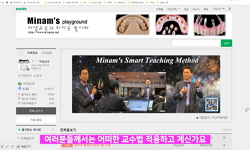People frequently exchange their message or information. In recent years, as the communication means are getting various, many new words are made and changing. Remarkably, a noun ‘Wanjeon’ in Korean is using as an adverb in real life. Therefore, f...
http://chineseinput.net/에서 pinyin(병음)방식으로 중국어를 변환할 수 있습니다.
변환된 중국어를 복사하여 사용하시면 됩니다.
- 中文 을 입력하시려면 zhongwen을 입력하시고 space를누르시면됩니다.
- 北京 을 입력하시려면 beijing을 입력하시고 space를 누르시면 됩니다.

한국어 ‘완전’과 ‘완전히’의 의미·통사적 고찰 -일본어와의 대조를 중심으로- = A Study on ‘Wanjeon’ and ‘Wanjeonhi’ from the semantic and morphorlogical consideration on the contrast with Japanese
한글로보기https://www.riss.kr/link?id=A104190684
- 저자
- 발행기관
- 학술지명
- 권호사항
-
발행연도
2012
-
작성언어
Korean
-
주제어
완전 ; 완전히 ; 完全 ; 完全に ; 부사 ; 부사화 ; 의미운율 ; 말뭉치 ; 수식 ; 품사 ; Wanjeon ; Wanjeonhi ; Kanzen ; Kanzenni ; adverb ; adverbialization ; semantic prosody ; corpus ; modification ; part of speech
-
등재정보
KCI등재
-
자료형태
학술저널
- 발행기관 URL
-
수록면
331-353(23쪽)
-
KCI 피인용횟수
6
- DOI식별코드
- 제공처
- 소장기관
-
0
상세조회 -
0
다운로드
부가정보
다국어 초록 (Multilingual Abstract)
People frequently exchange their message or information. In recent years, as the communication means are getting various, many new words are made and changing. Remarkably, a noun ‘Wanjeon’ in Korean is using as an adverb in real life. Therefore, first, this paper attempted to review the adverbialization of ‘Wanjeon’ on the analysis of written and spoken corpus in Korean and Japanese. Second, it considered the morphological and syntactical difference between ‘Wanjeon’ and ‘Wanjeonhi’ in Korean with the contrast with Japanese ‘Kanzen’ and ‘Kanzenni’. Third, it reviewed what semantic difference are made when ‘Wanjeon’ and ‘Wanjeonhi’ are substituted also with the contrast with Japanese
참고문헌 (Reference)
1 강범모, "형용사와 명사의 의미운율" 한국언어학회 36 (36): 1-23, 2011
2 전영옥, "한국어 담화 표지의 특징 연구" 한국화법학회 113-145, 2002
3 국립국어연구원, "표준국어대사전" 두산동아 2001
4 연세대학교 언어정보개발연구원, "연세한국어사전" 연세대학교 1998
5 고승곤, "새 일반통계학(General Statistics)" 교우사 2003
6 최형용, "국어의 비접사 부사 형성에 대하여" 한국학중앙연구원 32 (32): 3-26, 2009
7 日本国語大辞典 第二版 編集委員会, "日本国語大辞典 第二版" 小学館 2003
8 新村出, "広辞苑 第4版" 岩波書店 1991
9 原田登美, "否定との関係による副詞の四分類─情態副詞‧程度副詞の種々相─" 國語學會 128 : 122-138, 1982
10 임동훈, "‘이다’ 구문의 제시문적 성격" 국어학회 (45) : 119-144, 2005
1 강범모, "형용사와 명사의 의미운율" 한국언어학회 36 (36): 1-23, 2011
2 전영옥, "한국어 담화 표지의 특징 연구" 한국화법학회 113-145, 2002
3 국립국어연구원, "표준국어대사전" 두산동아 2001
4 연세대학교 언어정보개발연구원, "연세한국어사전" 연세대학교 1998
5 고승곤, "새 일반통계학(General Statistics)" 교우사 2003
6 최형용, "국어의 비접사 부사 형성에 대하여" 한국학중앙연구원 32 (32): 3-26, 2009
7 日本国語大辞典 第二版 編集委員会, "日本国語大辞典 第二版" 小学館 2003
8 新村出, "広辞苑 第4版" 岩波書店 1991
9 原田登美, "否定との関係による副詞の四分類─情態副詞‧程度副詞の種々相─" 國語學會 128 : 122-138, 1982
10 임동훈, "‘이다’ 구문의 제시문적 성격" 국어학회 (45) : 119-144, 2005
11 서경숙, "‘완전’의 부사화에 대한 연구" 언어연구소 (42) : 93-112, 2008
12 Partington,A, "Utterly content in each other's company:Semantic prosody and semantic preference" 9 (9): 56-131, 2004
13 Sinclair,J, "The search for units of meaning" Routledge 24-48, 1996
14 Partington,A, "Semantics" Cambridge Universitu Press 1998
15 Hunston, "Semantic prosody revisited" 12 (12): 68-249, 2007
16 Hoey,M, "Lexical Priming and the properties of text" 9 : 123-140, 2004
17 Louw,Bill, "Irony in the Text or Insincerity in the Writer? - The Diagnostic Potential of Semantic Prosodies, In Text and Technology: in honour of John Sinclair" 157-176, 1993
18 Hunston S, "Corpora in Applied Linguistics" : Cambridge University Press 2002
19 Louw,B, "Contextual Prosodic Theory: Bringing Semantic Prosodies to life, Words in Context: A Tribute to John Sinclair on his Retirement" U of Birmingham 2000
20 Stubbs,M, "Collcations and semantic profiles:On the Cause of the trouble with quantitative methods" 2 (2): 1-33, 1995
21 장미라, "'-은/는 것이다' 구성의 표현 문형 설정과 교육 방안에 대한 연구" 국제한국어교육학회 20 (20): 229-253, 2009
동일학술지(권/호) 다른 논문
-
조선의 ‘외국어로서 조선어교육’ 연구 - 류학생 회화 교재를 중심으로 -
- 국제한국어교육학회
- 김인규
- 2012
- KCI등재
-
외국인 학습자의 한국어 어휘 지식 평가를 통한 어휘 교육 방안 연구 -질적 지식의 평가를 중심으로-
- 국제한국어교육학회
- 이유경
- 2012
- KCI등재
-
한국어 교육 멀티미디어 자료의 유형과 구축 방식* - 누리-세종학당의 ‘디지털 자료관’ 구축을 위하여 -
- 국제한국어교육학회
- 이현주
- 2012
- KCI등재
-
외국인 학습자용 한국어 문법 교재의 문법 제시 방안 연구 - 담화·맥락 정보를 중심으로 -
- 국제한국어교육학회
- 정미진
- 2012
- KCI등재
분석정보
인용정보 인용지수 설명보기
학술지 이력
| 연월일 | 이력구분 | 이력상세 | 등재구분 |
|---|---|---|---|
| 2027 | 평가예정 | 재인증평가 신청대상 (재인증) | |
| 2021-01-01 | 평가 | 등재학술지 유지 (재인증) |  |
| 2018-01-01 | 평가 | 등재학술지 유지 (등재유지) |  |
| 2015-01-01 | 평가 | 등재학술지 유지 (등재유지) |  |
| 2012-10-30 | 학술지명변경 | 한글명 : 한국어 교육 -> 한국어교육 |  |
| 2011-01-01 | 평가 | 등재학술지 유지 (등재유지) |  |
| 2009-01-01 | 평가 | 등재학술지 유지 (등재유지) |  |
| 2007-01-01 | 평가 | 등재 1차 FAIL (등재유지) |  |
| 2004-01-01 | 평가 | 등재학술지 선정 (등재후보2차) |  |
| 2003-01-01 | 평가 | 등재후보 1차 PASS (등재후보1차) |  |
| 2002-01-01 | 평가 | 등재후보학술지 유지 (등재후보1차) |  |
| 2001-01-01 | 평가 | 등재후보학술지 선정 (신규평가) |  |
학술지 인용정보
| 기준연도 | WOS-KCI 통합IF(2년) | KCIF(2년) | KCIF(3년) |
|---|---|---|---|
| 2016 | 0.88 | 0.88 | 0.94 |
| KCIF(4년) | KCIF(5년) | 중심성지수(3년) | 즉시성지수 |
| 0.95 | 1.03 | 1.37 | 0.35 |




 KCI
KCI 스콜라
스콜라







